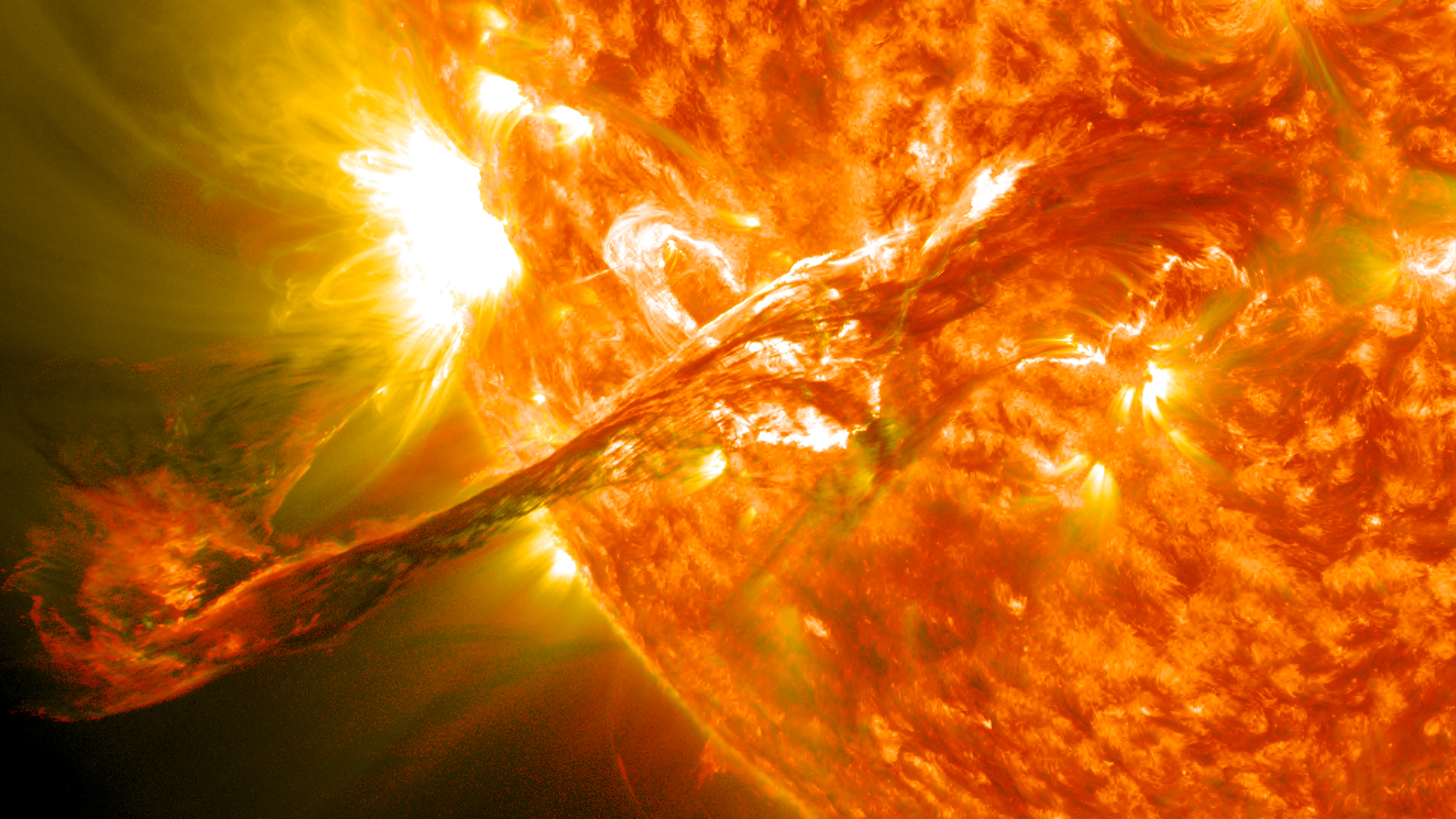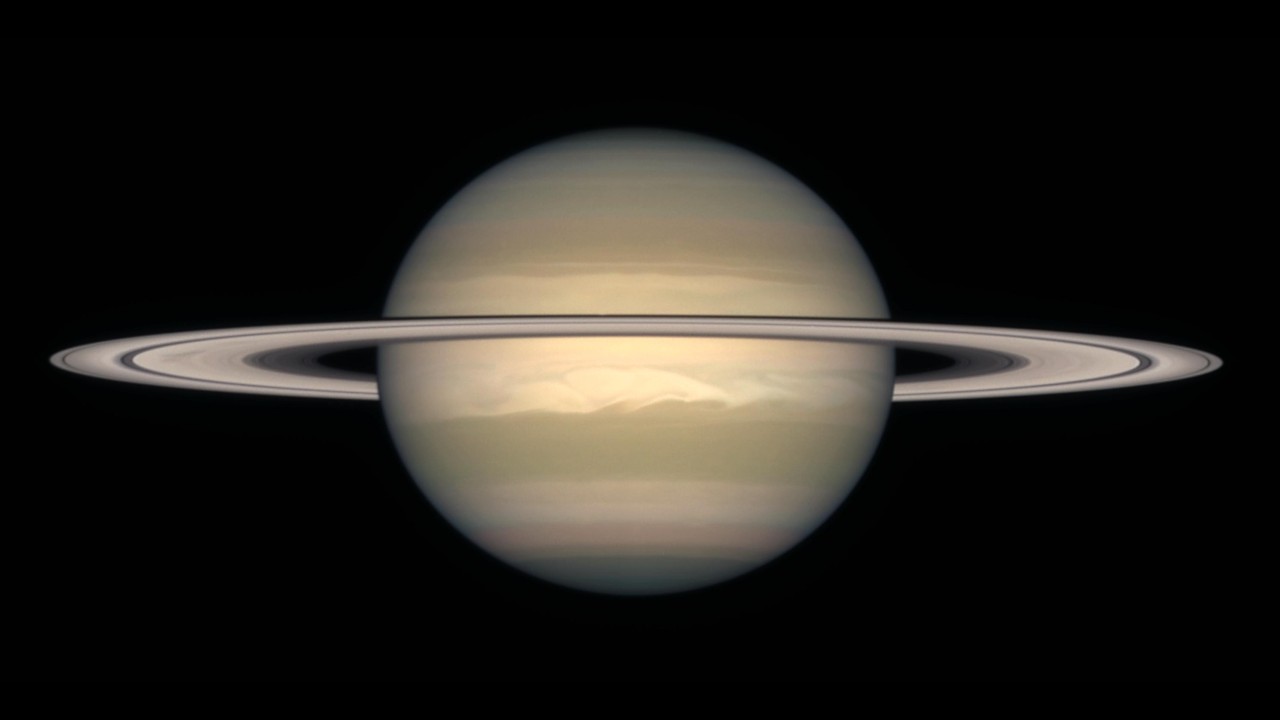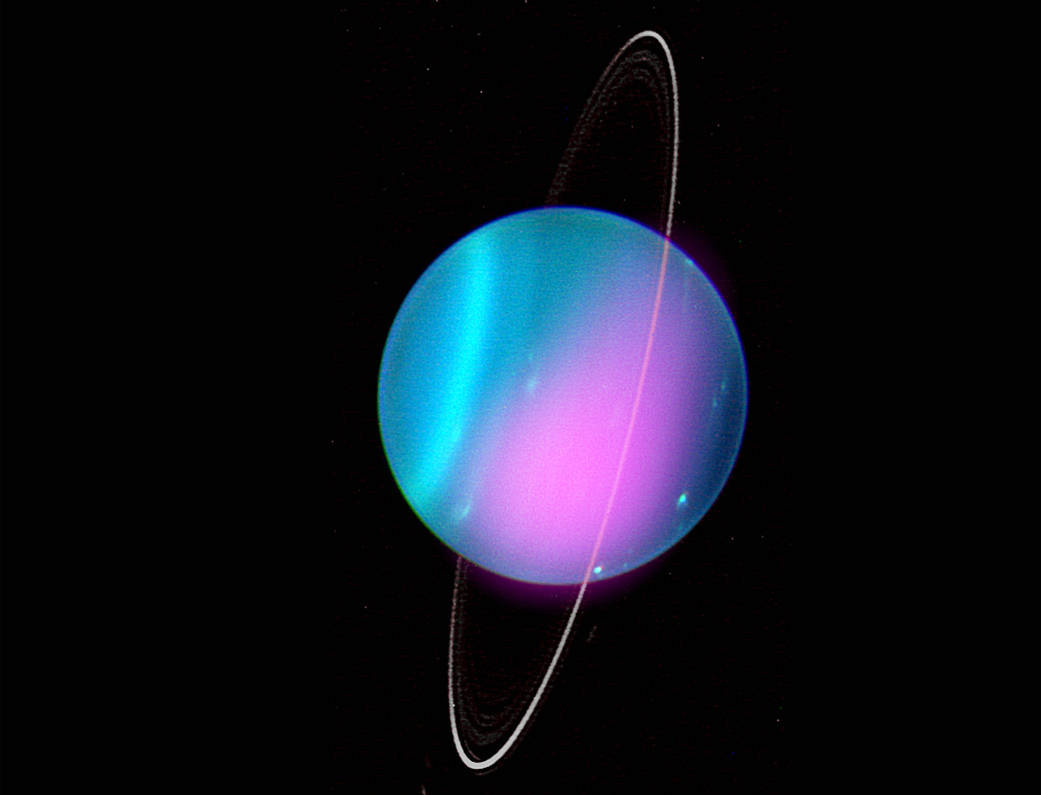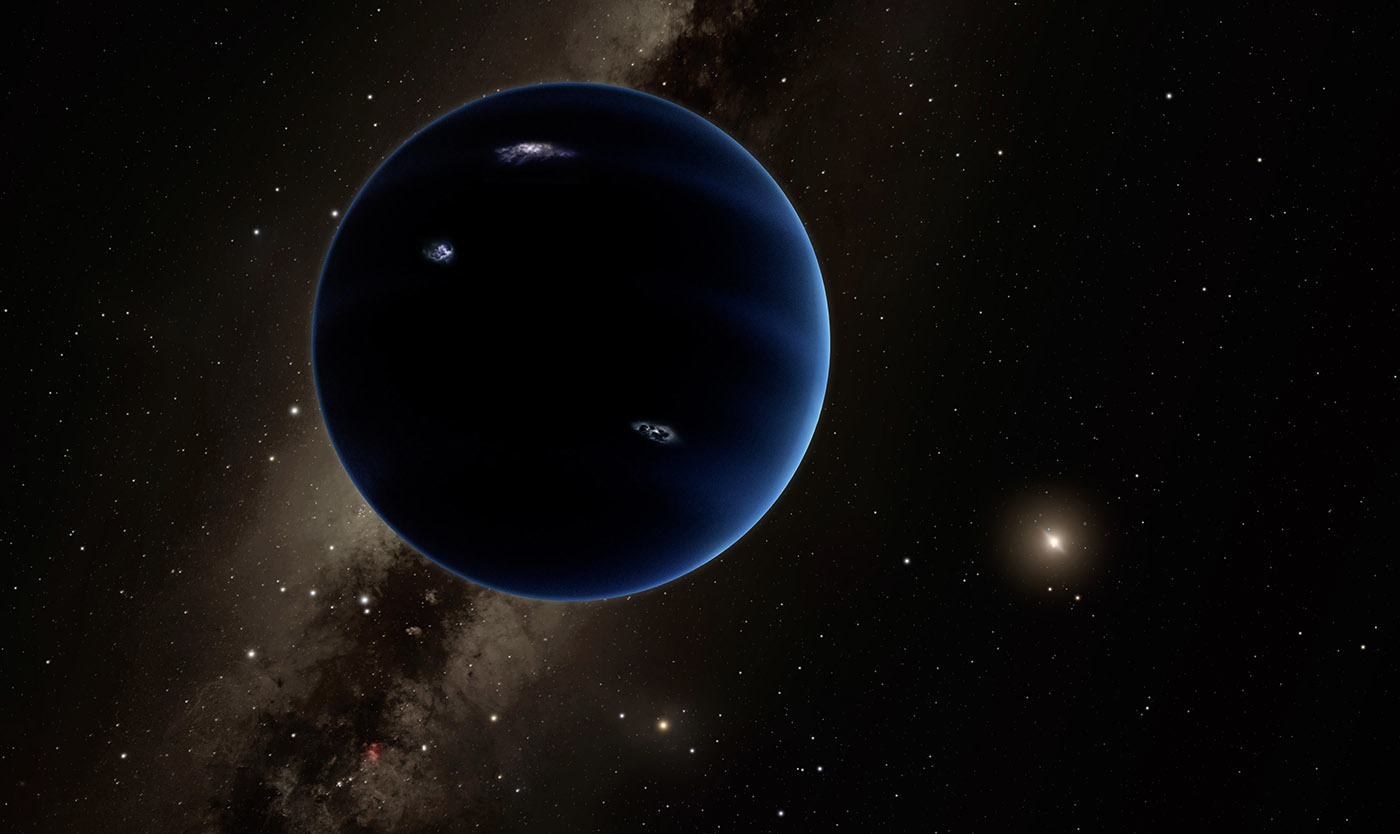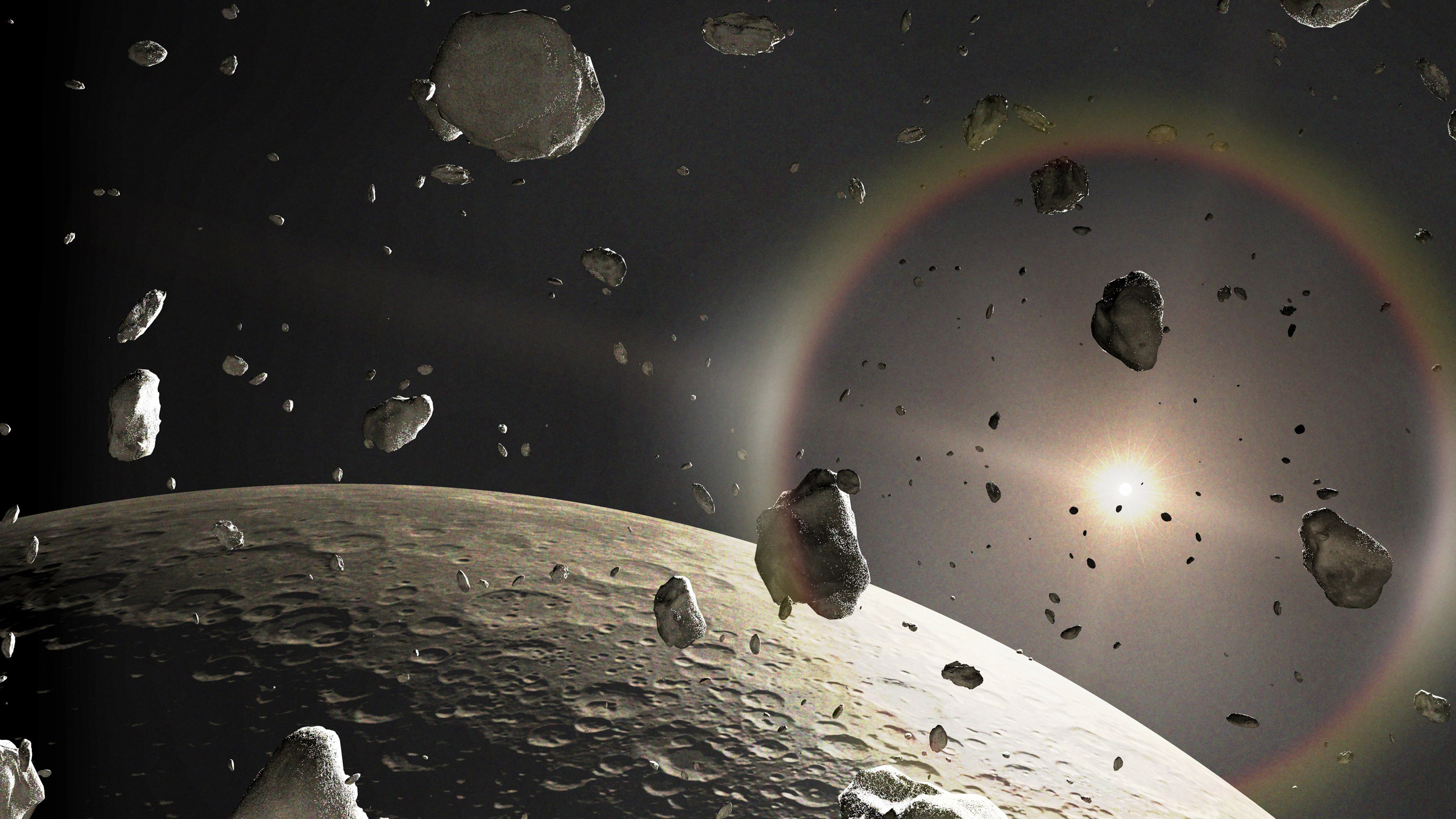The solar system: Facts about our cosmic neighborhood
Here's a look at our solar system, from the scorching surface of Venus to the home of the largest volcano.

The solar system is a collection of planets, moons, asteroids, comets, dust and gas that orbit our local star, the sun. It includes the rocky inner planets Mercury, Venus, Earth and Mars; the gas giants Jupiter and Saturn; and the ice giants Uranus and Neptune.
Between Mars and Jupiter is a collection of asteroids known as the asteroid belt, while beyond Neptune is where small icy bodies, like Pluto and comets, live.
How old is our solar system?
About 4.6 billion years ago, a giant cloud of dust and gas known as the solar nebula collapsed in on itself and began to form what would eventually become the solar system's sun and planets. Meteorites, or pieces of space rock that have fallen to Earth, have helped scientists figure out the age of the solar system. Some of these small pieces have broken off of moons or planets and can yield interesting scientific information about the chemistry and history of their home body. Others have been traveling around the solar system since its beginning, before the planets even existed. The Allende meteorite, which fell to Earth in 1969 and scattered over Mexico, is the oldest known meteorite, at 4.55 billion years old.
How did our solar system form?
Scientists think the solar system formed when a nearby exploding star, called a supernova, triggered the collapse of the solar nebula. According to this theory, the explosion sent shock waves through space, and those shock waves pushed parts of the nebula closer together, leading to collapse. The supernova may have even seeded material into the nebula, Live Science previously reported. For instance, scientists have found that aluminum-26, an element formed only in the hearts of stars, most likely originated from a series of nearby supernovas, Live Science sister site Space.com reported.
The sun
The sun is at the center of the solar system and is its largest object, accounting for approximately 99.8% of the solar system's mass, according to the University of California, San Diego. The sun is a giant, raging ball of fire powered by nuclear reactions, and it provides the energy that sustains life on Earth. The yellow dwarf star is made up of gas — about 91% hydrogen and 8.9% helium, according to NASA. Compared with other stars, the sun is relatively small and just one of hundreds of billions of stars in our home galaxy, the Milky Way.
The sun is about 26,000 light-years from the center of our galaxy, according to NASA. The Milky Way is a spiral galaxy, with curved arms of stars emanating from its center. The solar system is located in one of the smaller arms, called the Orion-Cygnus Arm, or simply the Orion Arm.
The Milky Way is huge compared with the solar system. If the solar system were the size of your hand, the Milky Way would be as big as North America, according to NASA Jet Propulsion Laboratory's Night Sky Network.
Get the world’s most fascinating discoveries delivered straight to your inbox.
Our solar system's planets
Eight confirmed planets and many dwarf planets orbit the sun. According to NASA, "the order and arrangement of the planets and other bodies in our solar system is due to the way the solar system formed." Rocky materials could withstand the young sun's immense heat, so the first four planets — Mercury, Venus, Earth and Mars — are small, with rocky surfaces. Beyond them, "materials we are used to seeing as ice, liquid or gas settled in the outer regions of the young solar system," NASA says, namely the gas giants Jupiter and Saturn and the ice giants Uranus and Neptune.
Mercury
Mercury is the closest planet to the sun. It is also the smallest planet in the solar system; at about 3,032 miles (4,879 kilometers) in diameter, it is only slightly larger than Earth's moon and has no moons of its own. Mercury has no atmosphere to protect it from the sun's relentless radiation, and surface temperatures can reach highs of 800 degrees Fahrenheit (427 degrees Celsius) during the day and plummet as low as minus 290 F (minus 179 C) at night. Because of its speedy rotation around the sun, Mercury was named after the Roman messenger of the gods.
Venus
Named after the Roman goddess of love, Venus is the second planet from the sun and the hottest planet in the solar system. Its atmosphere is a thick layer of mostly carbon dioxide gas that traps heat, allowing the planet's surface temperatures to reach a scorching 880 F (471 C). At 7,520 miles (12,100 km) in diameter, according to NASA, Venus is slightly smaller than Earth and, like our planet, has a core of molten iron.
In 2020, astronomers announced that they'd discovered phosphine in the atmosphere of Venus. On our planet, this chemical is almost always made by living creatures, leading some researchers to wonder if Venus' clouds might host life. However, the findings are controversial and have yet to be fully confirmed; indeed, other work has suggested that it would be too difficult for any creatures to survive in such a hellish place because of the lack of much liquid water.
Earth
The third rock from the sun, Earth is the only planet in the universe known to harbor life. Its habitability is linked to the presence of liquid water. Earth is located in the so-called Goldilocks zone, meaning it orbits at the ideal distance from the sun to have liquid water; if it were any closer, the water would evaporate into a gas, and if Earth were farther away, the water would freeze. About 71% of our planet's surface is covered in water, according to the U.S. Geological Survey, and Earth's atmosphere protects the planet from solar radiation.
Earth is the only planet not named after a god. Earth likely earned its name from the English and German words for "ground." The blue planet is the largest of the four rocky planets in the solar system, and it has one moon. Scientists think Earth's moon was formed from a piece of Earth that broke off when a giant object smashed into the young planet.
Mars
Mars is known as the Red Planet because of the iron-rich dust that covers its surface and gives it a rusty color. This red hue led the ancient Romans to name Mars after their god of war.
Mars, the fourth planet from the sun, is home to the largest volcano in the solar system, Olympus Mons. The planet has a thin atmosphere, and without a thick protective shield, temperatures on Mars average around minus 80 F (minus 60 C).
It is likely that liquid water — which would provide a home for life as we know it — existed on the Martian surface billions of years ago, and some scientists think Mars may still have liquid water on its surface today. Mars has two moons: Phobos, which may have formed from ancient rings around the planet, and Deimos, which may have been knocked into its current orbit by an ancient, no-longer-existing moon.
Jupiter
Jupiter is the biggest planet in the solar system. Unlike the inner planets, Jupiter is a gas giant, made up mainly of helium and hydrogen. It is named after the king of the Roman gods (also known as Zeus in the Greek pantheon).
Jupiter, the fifth planet from the sun, is twice as big as all of the other planets in the solar system combined, yet it also has the shortest day of any planet, taking 10 hours to turn about its axis, according to NASA. Jupiter is surrounded by dozens of moons, and its rings are faint and composed of dust. Deep in the planet's atmosphere, high pressure and high temperatures have compressed the hydrogen gas into a liquid, creating the largest ocean in the solar system, according to NASA.
Saturn
Saturn, the sixth planet from the sun, is the second-largest planet in the solar system. Saturn is best known for its prominent rings. Like Jupiter, Saturn is a gas giant composed of helium and hydrogen, and it is the least dense of the planets. Saturn's rings are made of billions of ice particles and rocks. The ringed planet also has dozens of moons, ranging in size from that of a sports field to the size of Mercury, according to NASA. One of Saturn's moons, Enceladus, is covered in an icy ocean that astronomers say makes this moon a promising candidate for extraterrestrial life.
Uranus
Uranus, the seventh planet from the sun, was the first planet to be discovered using a telescope, by British astronomer William Herschel in 1781. The ice giant is composed of heavier elements than its gas giant neighbors — a mixture of water, methane and ammonia ice.
Unlike other planets in the solar system, Uranus effectively orbits on its side (with its axis almost pointing toward the sun), and it "rolls" like a ball as it travels around the sun. Methane gas in Uranus' atmosphere makes the planet appear green-blue. The planet has 13 rings and 27 moons. It is the only planet to be named after a Greek deity, Ouranos the sky god, rather than a Roman one.
Neptune
Neptune, the eighth planet from the sun, was discovered in 1846. However, even before observing the planet for the first time, scientists predicted its existence, because of its effect on Uranus' orbit.
Neptune, which is named after the Roman sea god, is so far from the sun that it takes 4.15 hours for sunlight to reach the planet, according to Cornell University. (For comparison, it takes about eight minutes for sunlight to reach Earth.) When the light arrives at Neptune, it is 900 times dimmer than what we see on Earth, according to NASA.
Neptune is made up of water, methane and ammonia surrounding a small, rocky core. Strong winds on the planet propel clouds of frozen methane at speeds of up to 1,200 mph (2,000 km/h). Neptune has 14 known moons, one of which was rediscovered after going missing for 20 years.
Why is Pluto not a planet?
Pluto, once considered the ninth planet in the solar system, was reclassified as a dwarf planet in 2006 because it failed to meet one of the criteria in the definition of a planet. The International Astronomical Union defines a planet as a celestial body that orbits the sun, has enough gravity to pull itself into a round or almost-round shape, and has cleared the neighborhood around its orbit. Pluto has not cleared the neighborhood around its orbit, so it's not considered a planet.
Some astronomers believe this reclassification is unfair and that Pluto should be reinstated as the ninth planet in the solar system. Looking at the historical literature, Philip Metzger, a planetary scientist at the University of Central Florida, found that before the 2006 decision the "clearing the neighborhood" rule appeared only in a single 1801 paper. He and his colleagues concluded that this Pluto-excluding rule is "arbitrary and not based on historical precedent," Live Science previously reported, and that therefore Pluto should still be considered a planet.
Pluto, which is named after the Roman god of the underworld, sits in the vast Kuiper Belt, a region beyond Neptune that contains trillions of icy objects.
Planet X
There is a possible candidate to fill Pluto's vacancy as the ninth planet: Planet X, or Planet Nine. In a 2016 paper published in The Astronomical Journal, California Institute of Technology astronomers Mike Brown and Konstantin Batygin hypothesized that a planet 10 times larger than Earth could be orbiting the sun about 20 times farther away than Neptune does.
"All those people who are mad that Pluto is no longer a planet can be thrilled to know that there is a real planet out there still to be found," Brown said at the time. "Now, we can go and find this planet and make the solar system have nine planets once again."
However, Planet Nine's existence is still theoretical, because the planet has not been directly observed, according to NASA.
Between the planets
Between Mars and Jupiter, there is a huge collection of asteroids known as the main asteroid belt. These space rocks are leftovers from the formation of the solar system, and there are over a million known asteroids all over the solar system, according to NASA.
Asteroids come in a wide variety of types and are classified based on their composition.
Beyond the planets
Beyond the ice giant Neptune, the solar system extends to the Kuiper Belt and the Oort cloud. The Kuiper Belt, whose existence was confirmed in 1992, is 30 to 55 astronomical units (AU) wide, according to NASA. (One AU is the average distance between Earth and the sun — about 93 million miles, or 150 million km.)
The Kuiper Belt's most famous inhabitant is Pluto, but the region also contains hundreds of thousands of frozen objects 62 miles (100 km) or larger in diameter, many of which are remnants of the early solar system, according to NASA.
The Oort cloud, which is a collection of comets different than the Kuiper belt because it is located far, far in the solar system's icy outer reaches, has been hypothesized since the 1950s, but it has never been observed.
Additional resources
- Learn more about the solar system, its history and the different planets and objects inside it using NASA's interactive resource page.
- Explore beautiful maps of many planets and moons, from the U.S. Geological Survey.
- Discover how much you would weigh on different planets and moons, via San Francisco's Exploratorium.
Bibliography
Bartels, M. (2020, September 14). The phosphine discovered in Venus' clouds may be a big deal. Here's what you need to know. Space.com.
Batygin, K., & Brown, M. (2016). Evidence for a distant giant planet in the solar system. The Astronomical Journal, 151(2).
Bryner, M. (2012, November 14). How did Earth get its name? Live Science.
Choi, C. (2021, October 1). Mars: What we know about the Red Planet. Space.com.
Choi, C. (2017, May 12). Planet Neptune: Facts about its orbit, moons & rings. Space.com.
Choi, C. (2019, July 10). Uranus: The ringed planet that sits on its side. Space.com.
Choi, C., & Dutfield, S. (2021, October 31). Planet Mercury: Facts about the planet closest to the sun. Space.com.
Choi, C., & Dutfield, S. (2022, January 26). Saturn: Facts about the ringed planet. Space.com.
Choi, C., & Gohd, C. (2021, August 16). Venus: The hot, hellish & volcanic planet. Space.com.
Horton, J. (2021, November 18). Is there water on Mars? Live Science.
Howell, E. (2016, June 30). Neptune's moons: 14 discovered so far. Space.com.
Kornreich, D. (2019, January 28). How long does it take for the sun's light to reach us? Ask an Astronomer, Cornell University.
Kramer, M. (2013, October 8). Neptune's 'lost' moon spotted for 1st time in 20 years (photos). Space.com.
Letzer, R. (2020, June 4). Mars once had rings and a much bigger moon, new evidence suggests. Live Science.
NASA (2004, July 22). How far? How faint?
NASA Goddard Space Flight Center. (2020, October 22). The Milky Way.
NASA Science. (2021, October 30). Jupiter.
NASA Science. (2021, August 30). Our solar system.
NASA Science. (n.d.). Saturn moons.
NASA Science. (2017, November 30) Kuiper Belt: In Depth
Night Sky Network. (2017, June). Solar system, galaxy, universe: What's the difference? NASA Jet Propulsion Laboratory.
Pultarova, T. (2021, June 30). No hope for life in Venus clouds. Live Science.
Specktor, B. (2019, May 6). Scientists think they've found the ancient neutron star crash that showered our solar system in gold. Live Science.
Specktor, B. (2018, October 1) Pluto should be a planet and so should Earth's moon, new study claims. Live Science.
Tillman, N. T. (2021, August 16). Multiple supernovas may have implanted our solar system with the seeds of planets. Space.com.
Tillman, N. T., & Dutfield, S. (2022, January 17). How was the moon formed? Space.com.
University of California, San Diego. (2002). The Jovian planets.
U.S. Geological Survey. (2019, November 13). How much water is there on Earth?
Wall, M. (2020, February 25). Alien-life hunters are eyeing icy ocean moons Europa and Enceladus. Space.com.

Sarah Wild is a British-South African freelance science journalist. She has written about particle physics, cosmology and everything in between. She studied physics, electronics and English literature at Rhodes University, South Africa, and later read for an MSc Medicine in bioethics.
Since she started perpetrating journalism for a living, she's written books, won awards, and run national science desks. Her work has appeared in Nature, Science, Scientific American, and The Observer, among others. In 2017 she won a gold AAAS Kavli for her reporting on forensics in South Africa.


